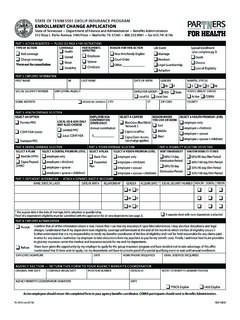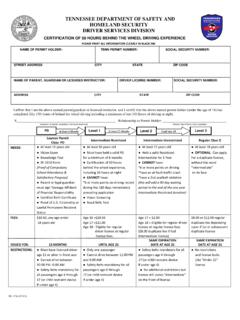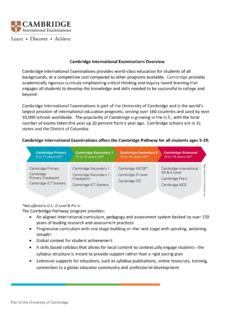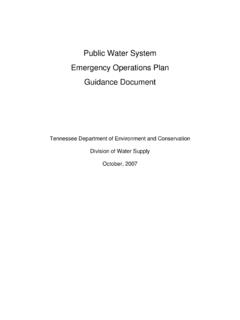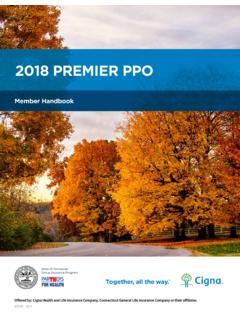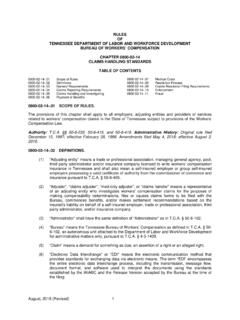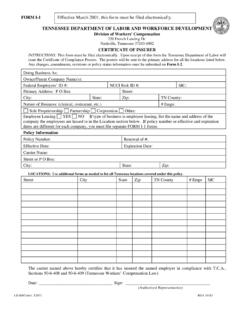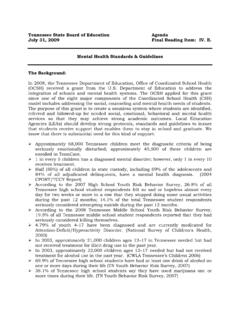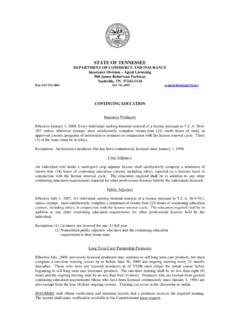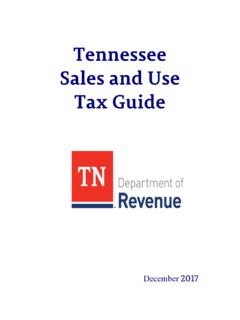Transcription of Supporting Long-Term English Learners
1 English Learners A Guide Tennessee Department of Education | August 2018 Supporting Long-Term Contents 3 Guiding Principles .. 3 Landscape .. 4 Characteristics of LTELs .. 6 Background Context on LTELs .. 6 6 LTEL Influencing Factors .. 7 Phases of Language Acquisition .. 7 Promising Practices .. 7 Course 8 Authentic 9 Academic 9 Cultural 10 Individual Learning Plans (ILPs) .. 10 Social and Personal Competencies .. 11 Student Profiles: Promising Practices in 12 Next Steps - 14 Conclusion.
2 14 References .. 15 2 introduction The purpose of this document is to provide research and promising practices on how to support Long-Term English Learners (LTELs). Tennessee defines a Long-Term English learner as a student who receives English as a second language (ESL) services for longer than six years.
3 An EL becomes an LTEL when they enter into the seventh year of ESL services. As the department has outlined in the resource Supporting All English Learners Across Tennessee: A Framework for English Learners , it is imperative that we develop and implement a rigorous plan to support ELs to ensure that all students are given the opportunity to fulfill their chosen path in life. This guide is designed to support districts, schools, and educators in having conversations around their LTELs and developing and strengthening plans to support language and content acquisition. In order to ensure ELs are ready to graduate and be successful in postsecondary and workforce opportunities, the goal of Tennessee schools must be to move ELs through the program within 5-6 years, and even sooner for those entering at an early age.
4 The Department of Education has a toolkit for ELs and another for newcomers online at English Learner Toolkit and Newcomer Toolkit. Guiding Principles All of the guiding principles listed below support the department s Tennessee Succeeds vision that ALL students should be prepared for postsecondary and the workforce. Tennessee commits to ensuring that ELs are equipped with the knowledge, skills, and habits to be successful in their chosen path in life. We believe LTELs should be provided the appropriate differentiation, accommodation, and scaffolding to be able to access the correct grade-level Tennessee Academic Standards.
5 We believe LTELs in middle school and high school should, wherever possible, be provided the opportunities to participate in electives based on academic interests. We believe LTELs should be part of the conversation around personal goal setting and individual academic data. We believe LTELs can exit ESL services and take advantage of early postsecondary opportunities in high school. We believe LTELs must have access to strong Tier I core instruction. 3 - -Landscape Tennessee s EL population has seen dramatic growth over the past six years with 132 of the 147 districts in the state serving at least one EL in 2016-17.
6 Out of the 52,000 ELs in 2016-17, 13 percent are LTELs. In order for a student to be classified as a LTEL they must be in their seventh year of receiving ESL services; therefore, all LTELs must be in grades 6-12. Chart 1 below illustrates that 41 percent of ELs in grades 6-12 are LTELs. On average, LTELs have been receiving ESL services for eight years. Chart 1 Chart 2 9,184, 59% 6,283, 41% ELs in Grades 6-12 Not LTEL LTEL 12% 7% 29% 0% 20% 40% % SWD Percent SWD by LTEL Status EL Grades K-5 Not LTEL Grades 6-12 LTEL Chart 2 highlights the percent of ELs who are dually classified as a student with disabilities (SWD).
7 Seven percent of non-LTEL ELs and 29 percent of LTELs are dually identified as a student with disabilities. This important data point highlights that some students who are LTELs may also have an additional support structure that is needed through an IEP, but the data clearly shows not all LTELs are students with disabilities. Tennessee data also reveals that LTELS have lower chronic absenteeism rates than their non-LTEL peers and have rates similar to non-EL students. Fifteen percent of non-ELs are chronically absent, percent of non-LTEL ELs are chronically absent, and percent of LTELs are chronically absent.
8 This shows that chronic absenteeism is not a major contributing factor to a student being a LTEL. 4 of former English Learner students Students who have exited EL services often outgrew all students 3-5 ELA 3-5 Math High School Math History II Department of -All Students -Former EL Students The 2017-18 TNReady scores for ELs show that the full English learner student group, which includes recently exited students, narrowed the gap with their non-EL peers in both math and English language arts (ELA)
9 , with an across-the-board increase in the percent of EL students scoring on track and mastered. Additionally ELs who have exited ESL services outgrew all students in percent of students on track or mastered on TNReady (Chart 3). For grades 3- 5 ELA, percent of all students improved in percent of on track or mastered whereas percent of ELs improved. This trend continued across 3-5 math, high school math, and History. This exciting and impactful data shows that the tremendous work across the state should be celebrated and used as motivation to continue to push ourselves in this work.
10 Chart 3 5 Characteristics of LTELs Long-Term English Learners have unique language challenges that necessitate a differentiated approach to Supporting language acquisition and content LTELs often function socially in English and their home language but may lack the deeper levels of vocabulary, syntax, and grammar in order to successfully exit an ESL program.
